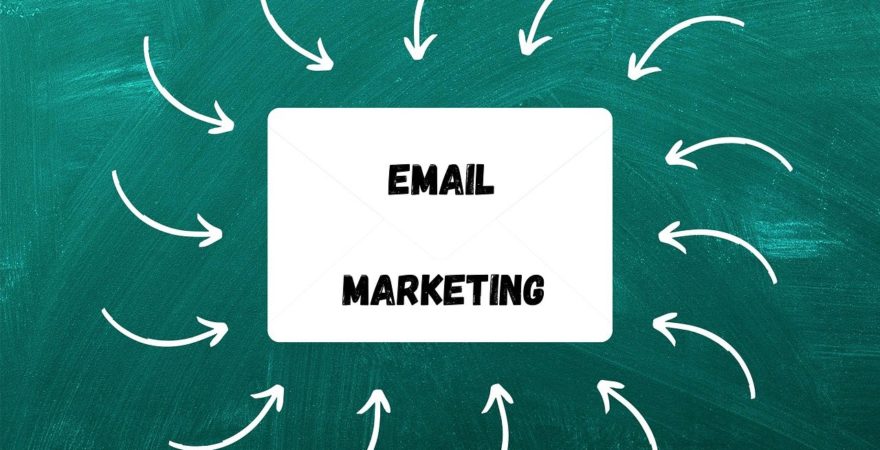If you want to reach a new horizon of email marketing opportunities, then marketing automation is the way to go. You can get 119% higher click rates by email marketing automation than broadcast emails.
Email marketing automation can also get you 18 more revenue than general email campaigns. But what is email marketing automation?
It is a type of email marketing campaign that can be set up once according to time, day, or user actions and is automatically sent to the audience.
Sending manual emails about your new product or service to every customer can be quite time-consuming. So, creating email marketing automation can help you to deliver emails automatically to your customers.
Some of the advantages of email marketing automation include an increase in sales, productivity, and loyalty.
Table of Content
How does Email Automation work?
An automated email is sent to a customer as soon as an event on the website has occurred. For example, a purchase is made or a form is filled. By using smart automation, these emails will be sent to the right person and the right time and with relevant information.
Another important factor is to clean your email list. This way you will be able to separate email addresses that are active and real.
Why Adopt Email Marketing Automation?
Key players in the B2B marketing industry rely on email automation and believe it can boost the conversion rate. Email automation can save time and money if planned and executed properly.
Let’s look closely at how email and what events on your website can trigger email automation.
- After signs up
- After filling a form or a survey
- After writing a review
- If you have an e-commerce-based website, and your user abandons their cart without completing their purchase.
- Sending an email to an old subscriber who has not taken any actions or visited your website for a long time.
Email automation can increase ROI, increase brand value, and reliability.
What are the Main Terms you Need to Know before you Start with Email Automation?
Before you start with email automation, you need to know the common and important terms. Get to know how to execute them to your strategy flawlessly.
Let’s get into details;
- Opt-in/Subscribe: When a user opts-in or subscribers to get your emails
- Double Opt-in: When a user opts in and wants to confirm their opt-in
- Spam: When you send an email to a user who has not opt-in or you send too many random emails to your user after they opt-in
- Unsubscribe: When a user unsubscribes your emails
- Trigger: An event that indicates an email has been sent
- Sequence: The frequency of emails sent after an event occurs
- Email campaign/Autoresponder: A sequence of emails
- Bounce Rate: This term is referred to as non-delivered emails. The ratio of the bounce rate should be average. If it is too high, this means that your email marketing campaign is not working successfully.
- CTR or Click Through Rate: The rate or number of clicks on the mentioned link on your email.
How to Start with Email Marketing
Email marketing is relatively old but one of the most effective marketing platforms. Many digital marketers find email marketing automation as the best way to increase customer engagement.
It can be used to send engaging and relevant emails to your users. With time-sensitive and triggered emails, you will be able to bring more conversions.
But how to start with email marketing automation?
Following are the 10 steps to start with email marketing g automation
- Choose an email marketing service provider
- Find contacts for your email marketing plan
- Add the contact list to your email marketing account
- Create a catchy welcome email
- Create an email template that can be reused
- Practice writing convincing messages
- Write an effective subject line
- Proof-read and test before you send your email
- Choose the best time and date to send your email
- Track and analyze results
Email Marketing Automation Tools
Creating, maintaining, optimizing, and analyzing email marketing automation strategies can be time-consuming and tricky. There are many free as well as paid tools available on Google to help you with email automation.
- OptinMonster: With OptinMonster, you will be able to create forms and landing pages on your website that can increase the rate of conversion. This tool also helps to segment customers and leads which in return helps in lead management.
- RafflePress: Running giveaways and contests is one of the best-proven ways to increase email subscribers. This tool helps you create and host these contests.
- Contactually: This tool also focuses on evaluating contacts. This tool helps you in gathering information from different platforms. This information can then be used to create content for email messaging.
- HubSpot: HubSpot is one of the high-ranked marketing automation tools. This tool helps in streaming email marketing services.
- Intercom: If you want to let your customers or users know about your app, then this tool will help you redirect email conversions in the app.
Conclusion
Staring email marketing automation can be overwhelming just like any other marketing automation. But it all requires trial and error to know how and what works for you the best.
Remember, successful marketing automation does not only depend on creation, optimization, and execution but also on tracking and evaluating results.
You need to identify which email benefits your business more. Identify who clicked the mentioned links on your emails, who opened your emails, and what information your user was most interested in. Engagement is important, but tracking your results is equally essential for flawless automation.
We can help you with email marketing automation. Let the industry experts guide and assist you with a perfect automation strategy tailored according to your business goals. To know more contact us.








